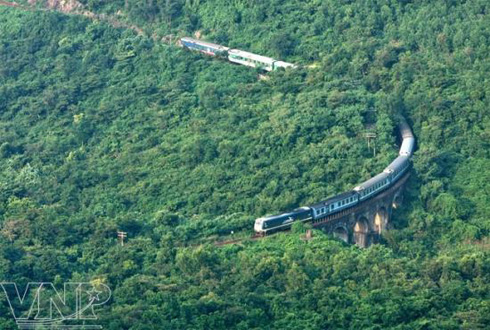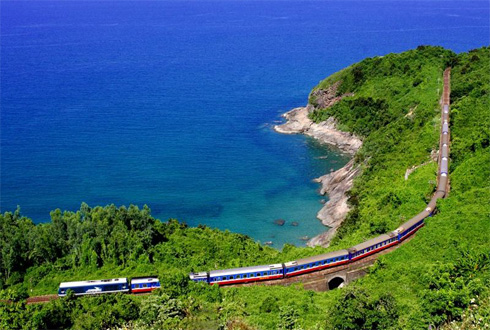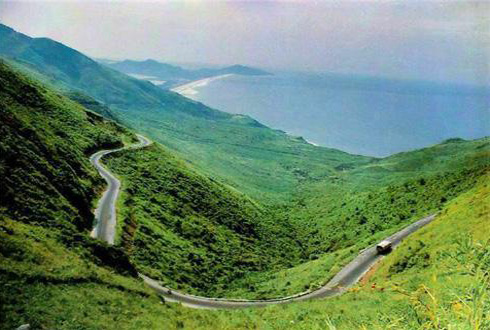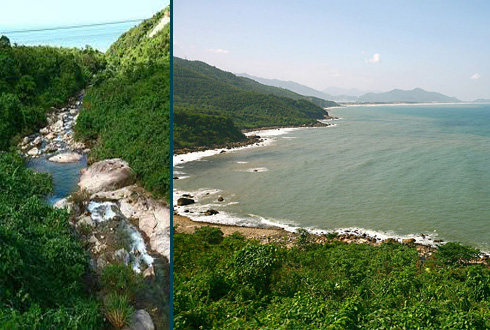The pass has long been an obstacle on the north-south road of Vietnam. With sudden curves and blind corners, Hai Van Pass is likened to an arrogant but beautiful girl challenging drivers’ skills. A 21km-long road over Hai Van Pass, opened at the end of the 19th century, winds back and forth to a height of 496m above sea level. The twisting road on the pass has long been a challenge for many Vietnamese drivers.
The Hai Van railway passes over Da Nang to Thua Thien – Hue (and vice versa), through the stations of Kim Lien and Hai Van Nam (in Da Nang), Hai Van (located in the middle of the pass), Hai Van Bac, Lang Co (in Thua Thien – Hue).Kim Lien and Lang Co lie at the foot of the pass, while the railway stations of Hai Van Nam and Hai Van Bac are on the pass. Hai Van means “Sea Clouds”, named as the peak of the mountain is in the clouds while its foot is close to the sea.
Sitting on the train, tourists can overview a spectacular landscape outside – the vertical cliffs, and the East sea at the foot of the pass. Looking out the window, you can see the train gliding around the mountain and the entrance to the Hai Van tunnel. Even though there now exists a Hai Van tunnel going through the mountain, many people still choose to travel by train to enjoy the fascinating landscape of the Hai Van Pass – the meeting points of North and South. Hai Van Pass is like a giant dragon and is also named De Nhat Hung Quan, meaning the most colossal frontier post.
The train slopes up and passes through the mountainous tunnel

















